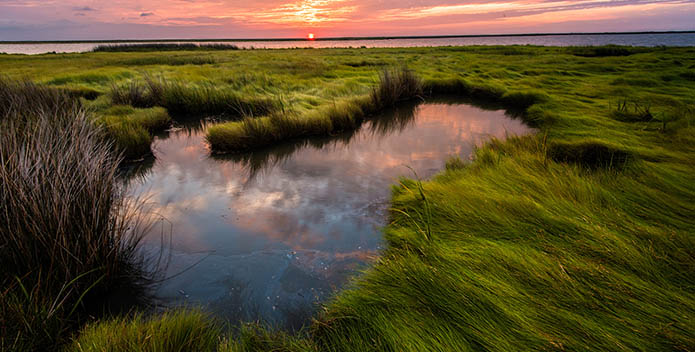The following first appeared in The Talbot Spy.
President Trump's budget does not support clean water. How else to interpret his budget proposal for next year which cuts 90 percent of the funding for the Chesapeake Bay Program, and funding for other clean-water programs around the country?
Thankfully, the President has found little support for his extreme cuts, even in his own party, and particularly locally where elected officials have a first-hand understanding of the effectiveness of this funding. But why should we have to fight the White House for clean water?
This is the second year in a row the President has sought to dramatically scale back the Chesapeake Bay Program, the federal-state partnership responsible for cleaning up the Bay.
Note: The Chesapeake Bay Program is sometimes confused with the Chesapeake Bay Foundation. The Program is an arm of the federal government. CBF, where I work, is a non-profit organization funded by private donations.
Restoring the Bay is non-partisan. Republican and Democratic governors in the six Bay states have supported efforts to clean up the Chesapeake for decades. The current clean-up plan was jointly crafted by the states and the federal Environmental Protection Agency (EPA). As recently as last week, Governor Hogan publicly supported full federal funding for the Bay Program. Hogan is the current chairman of the Chesapeake Executive Council. All six current governors and the mayor of the District of Columbia sit on the Council.
Congress also has pushed back again the President's attack on Chesapeake Bay restoration. The House of Representatives last year voted to restore much of the funding the President wanted to cut, and the Senate Appropriations Committee voted to restore the entire $73 million budget. The final federal budget for fiscal year 2018 still is being negotiated.
So, it's reasonable to expect the President's latest proposal to reduce the Bay Program budget to $7.3 million for fiscal year 2019 will be softened or rejected by Congress.
But it's frustrating to have to spend so much time and effort defending a program so many support. Governor Hogan called the program "cooperative federalism," states and the federal government cooperating just as the Founding Fathers envisioned when they crafted the Constitution. Even Scott Pruitt, Secretary of EPA appointed by Trump, has called the Program a model to be emulated.
And why not? Where else in the country are we seeing such a success story of a badly polluted body of water being restored.
The Bay Barometer report issued this past month noted a "continued improvement in the health of the Chesapeake Bay: a positive sign that restoration efforts are working." The blue crab population is trending upward, underwater grasses are returning, and pollution is falling. Forty percent of the Bay and its tidal tributaries met water quality standards between 2014 and 2016, the highest amount ever recorded, according to the Barometer report.
One reason the Bay Program succeeds: it passes on most of its funding to local governments, colleges, and non-profits working in the Chesapeake clean-up effort. But it requires beneficiaries to contribute, too. A great example is the Healthy Waters Round Table on the Eastern Shore. Queen Anne's and Talbot counties, along with the municipalities of Cambridge, Easton, Oxford, and Salisbury, recently received a $316,000 grant through EPA and the National Fish & Wildlife Foundation to help the local jurisdictions hire and share a pollution reduction expert. But local governments had to kick in as well. The Eastern Shore counties and municipalities contributed $197,000 and the Maryland Department of the Environment contributed $150,000.
The Bay Program distributes similar matching grants for various Bay-improvement strategies.
Bipartisan support. Shared financial responsibility. Proven success. This is the Chesapeake Bay Program.
Yet here we are—again—having to defend the program from attack from the White House.
Tom Zolper
Issues in this Post
Chesapeake Clean Water Blueprint Bay Grasses Blue Crabs Chesapeake Clean Water Blueprint Politics



